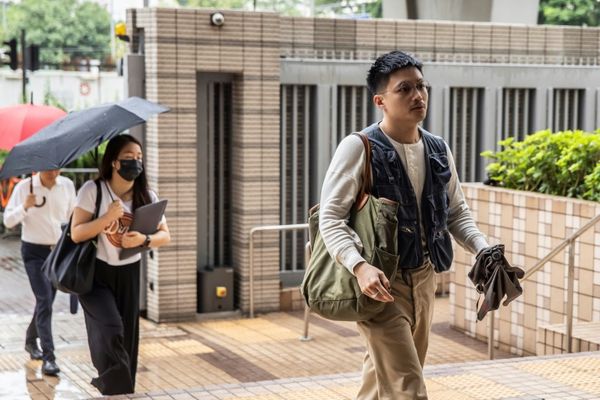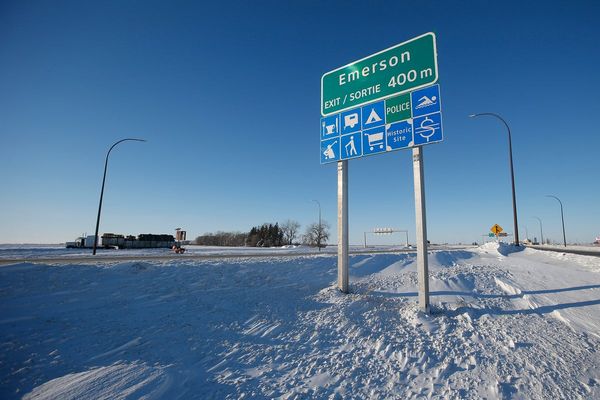
Dalia Hawas was 24 years old when an Israeli airstrike flattened the apartment building where she lived in February, burying the young mother with her 10-month-old daughter, Mona. They are not listed among Gaza’s war dead, because their bodies were trapped too deep beneath the rubble for rescue teams to reach them.
Ten months into Israel’s war on Gaza, the death toll has passed 40,000, according to health authorities there. Most of the dead are civilians and the total represents nearly 2% of Gaza’s prewar population, or one in every 50 residents.
But even that figure does not tell the full story of Palestinian losses. “This number, 40,000, includes only bodies that were received and buried,” said Dr Marwan al-Hams, the director of field hospitals at the Palestinian ministry of health. “New procedures are being tested to include those who are missing or known to be under the rubble on the list of the dead, but they have not yet been approved.”
About 10,000 airstrike victims were thought to remain entombed in collapsed buildings, Hams said, because there was little heavy equipment or fuel to dig through steel and concrete ruins looking for them.
“Every time I remember Dalia, I start crying and shivering,” said her mother, Fatima Hawas. “I picture her demolished house and feel I am suffocating, because even after her soul departed we could not recover her body for a proper burial.”
A graduate of Arabic language and literature, Dalia loved to read and dreamed of becoming a teacher, she said. “Sometimes I still see her in my dreams and this makes it a little easier for me, even though I cry when I wake up.”
Another group of Palestinian war victims do not show up in the official count, which only registers those killed by bombs and bullets as war dead.
Over the past 10 months the war has brought mass displacement into crowded shelters and makeshift tents, hunger as aid shipments dwindled and chronic shortages of clean water and sanitation which spread diseases.
Hospitals have been bombed and besieged, their supplies of medicines, equipment and fuel cut off, their medical staff detained or killed, and their wards left overflowing.
“People who died due to indirect impacts of war, including diseases, starvation and the collapse of the healthcare system, are not included [in the war dead],” said Hams. “A committee will be formed to count these [victims], which will start work immediately after the end of the war.”
Among the thousands likely to appear on this list are Rania Abu Samra’s 75-year-old grandmother, Hania Abu Samra, and her 59-year-old father, Adnan Abu Samra.
Hania collapsed and died in front of her granddaughter in November, after the family walked from northern Gaza to the south in a day, Rania said. They left home on foot after the Israeli military issued an evacuation order for the area, because they had no other form of transport.
Adnan died of a chest infection less than three months later, after being turned away multiple times from overcrowded hospitals, Rania said.
She described her father as an energetic man who had managed diabetes and high blood pressure well before the war. His lungs were ruined by winter spent without heating in a makeshift plastic shelter and cooking on fires made from scavenged scrap wood and plastic. By the time a doctor saw him, it was too late.
“If it wasn’t for the war, he would not have left us so early. He wasn’t even 60,” she said. “His loss has affected us greatly. He was the bond at the heart of our family, and would get whatever we needed done.”
“I am sure there are thousands of others like my father, who no one knows about and who have not been listed among the war dead,” Rania said. “Don’t just think of them as numbers. They had a life to live, they had families and friends, but they left without even saying goodbye.”
Israeli officials question the death toll given by the authorities in Gaza. They argue that because Hamas controls the government there, its health officials cannot provide credible figures, but the doctors and civil servants who run the hospitals and health system have a credible record from past wars in Gaza.
After multiple conflicts between 2009 and 2021, United Nations investigators drew up their own lists of the dead and found they closely matched ones from Gaza.
“Unfortunately, we have the sad experience of coordinating with the ministry of health on casualty figures every few years,” Farhan Haq, a spokesperson for the UN secretary general, has said. “Their figures have proven to be generally accurate.”
The overall death toll from Gaza is not divided between combatants and civilians, but by the middle of August, 32,280 bodies of victims of the conflict had been identified by name.
Most are considered civilians because of their age or gender, with 10,627 children, 5,956 women and 2,770 elderly people. Other civilians counted included 168 journalists, 855 medical staff and 79 paramedics. This is more than 20,000 civilians and excludes the many civilian men of fighting age who have been killed.
Israel does not estimate civilian casualties in Gaza, but the military says it has killed about 15,000 fighters. Israel launched the war after cross-border Hamas attacks on 7 October killed about 1,200 people, the majority civilians. Another 250 were taken to Gaza as hostages.
The pace of death in Gaza has slowed slightly this year compared with 2023. Israeli attacks killed more than 22,000 people by 31 December, according to health officials, higher than the toll for 2024 to date.
Even so, it is unprecedented in the decades-long conflict between Israel and Palestine, and historically extremely high. Huge bombs fall daily, often killing dozens. On Saturday an airstrike hit a school that had turned into a shelter.
Those left behind by each attack have to deal not only with their grief, but the trauma of living on in the shadow of death and the constant threat of another attack.
In November an airstrike destroyed Ali Abbas’s apartment building, killing two of his children, Fatima, 17, and Omar, five, his brother and two nieces, one of them just 20 days old. There was no evacuation order or warning.
Abbas was so badly injured he spent two weeks in intensive care, initially shielded from news about his children’s deaths. When he was told, he tried to disconnect all the tubes keeping him alive. What is left of their family now lives in a tent.
“I always say we should go to stay in my mother’s house. But my son refuses because he has developed a phobia of buildings and walls, and he is afraid of the dark because the building collapsed on top of us when it was bombed, and people had to pull him out from under the rubble.
“I wake up to his screaming. He usually has nightmares that he is still under the rubble and he begs: ‘Help me, help get me out, please!’”
• This article was amended on 15 August 2024. An earlier version reported that the bodies of 28,185 Palestinians had been identified by name by the end of June, according to Gaza health authorities; this overlooked an update on 14 August 2024 giving a figure of 32,280. The update has been reflected, including revised numbers for women, children and elderly people identified among the dead.







